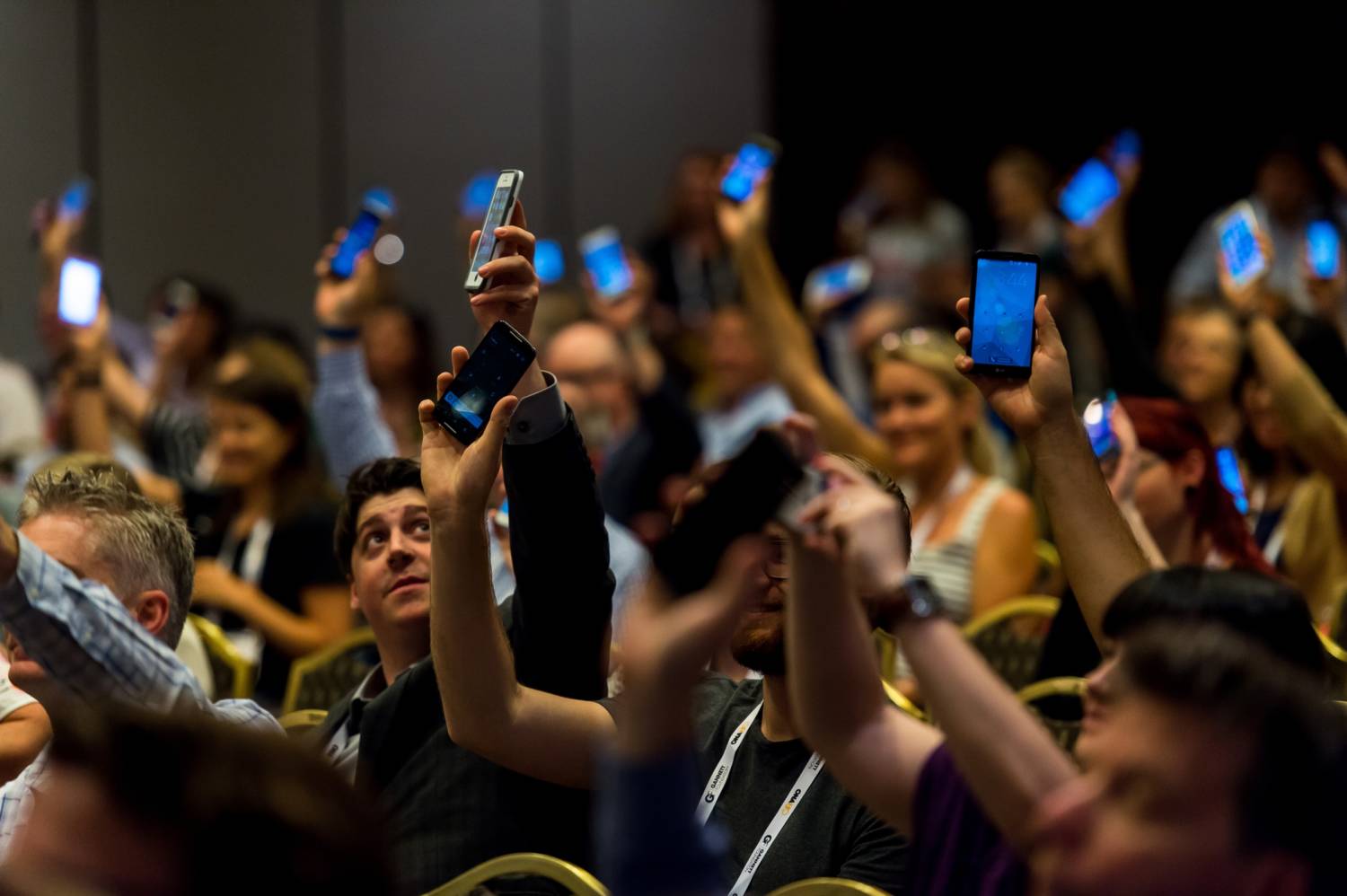It’s journalism conference season once again, so you may have spent the past month hopping from city to city learning engagement strategies, swapping war stories and getting free pens from vendors to schlep back to your newsroom.
If you’re anything like me, you can quickly get overwhelmed by the August through September conference season. Conference days are long and require a lot of mental energy. And having weekends filled with conferences in between long weeks in a newsroom means there’s not much time to rest for the next work week.
I felt differently when I attended SRCCON two years ago. The conference, which was put on by Knight-Mozilla OpenNews, was aimed at folks who work with newsroom code or who think about coding in newsrooms. It was thoughtful, intentional and welcoming. Much of that was due to the work of Erika Owens, a program manager with Open News. Erika manages outreach and engagement work that strengthens existing work and welcomes new folks into the journalism code community.
Owens is one of the best journalism conference managers that I’ve ever seen. Her thoughtfulness and attention to detail ensure that participants feel welcome and included and continue to feel those things long after the conferences have taken place.
I reached out to Owens to learn more about her outreach strategies for building diverse, inclusive and fun spaces for journalists to grow and learn. Below is a transcript of our conversation.
SRCCON was one of the best conferences I’ve ever been to, and I know you had a lot to do with ensuring that it was an intentional, welcoming space. Can you talk a little bit about how you thought about producing the conference in advance, and why it worked so well?
I think conferences that make people feel really welcome all have something in common: there’s some thought put into making people feel welcome. The team that put on SRCCON actually put time, effort and energy into thinking about what people needed from the conference, and what barriers might exist that would prevent someone from feeling welcome or enjoying the conference.
We knew we wanted to attract people working on newsroom tech teams, but we were also looking for a range of experiences, and attracting new people who don’t typically hit the journalism conference circuit. So we designed the conference spaces with that in mind. For example, it’s tough to talk to new people at a conference that has a ton of sessions back to back. So we intentionally designed lots of time between sessions for people to mingle in the hallways. We wanted time and space away from sessions because hallway conversations often allow people to mingle and meet who otherwise wouldn’t have the chance.
We also made sure that participants would have meals and evening social time together, so that they could again learn from each other in less structured ways. And we constructed a coffee-hacking station in the mingling space, so that there was something for people to do together in a low-pressure way. (My colleague Erin Kissane wrote up more about how that worked here.)
Part of the reason I enjoyed SRRCON so much is that it felt like you thought about every little detail. I remember that my institution was left off my nametag, so that people wouldn’t make assumptions based on affiliation. You guided people on how to craft an effective presentation. And once there, there was childcare, food, and a code of conduct that made everyone feel welcome. What did you look to for inspiration?
We relied very heavily on what AdaCamp did for their unconferences in the open source movement. They put all of their documentation online, and there are detailed notes on how to assess a venue, how to offer grants, how to structure events and dinner, how to make a conference accessible and how to ensure session participants stay on-topic and make sure no one monopolizes the conversation. They were a huge influence.
We found inspiration at journalism conferences as well. We thought a lot about NICAR, the annual conference for data journalists. At NICAR, people found different ways to build spaces that allowed people to mingle with new folks and build skillsets.
We also hired an event planner, Erik Westra, who had a deep knowledge of running events. So we combined his knowledge with the little tweaks we wanted to ensure the event was very thoughtful.
What advice would you have for others who want to throw a thoughtful journalism conference or event?
It takes time and effort, I’ll say that. But it doesn’t take as much time as people might fear. A little bit of thought ahead of time doesn’t quadruple the amount of stuff you have to do. And the fear people have is probably not reflected in the time doing outreach and building a humane schedule actually take.
We did spend a lot of effort creating processes, and then institutionalizing those processes. So we wrote up how to plan a session, how we did outreach to attract participants and how we thought about all of the human needs people have when attending a conference. It’s important to create these processes and then follow through. A lot of people really care about throwing a good, thoughtful conference, but then these processes are not always present.
One of the details I most admired was that you thoughtfully reached out to potential SRCCON session leaders very deliberately. Can you talk a little bit about how you structured the conference outreach?
We really wanted to make sure people knew about the SRCCON call for proposals, and we spent a lot of time on outreach. There are little things that anyone can do: First, we encouraged people to apply on all of our public channels and wrote up documentation for how to plan a session and what we learned from sessions, to help people who had maybe never written one before.
We also reached out to people directly, and people outside of our networks. We listed people we knew in a spreadsheet, and then reached out to them, and then provided them with an email template that they could use to invite their own networks. This took a little time on our parts up-front, but reduced the burden on people who wanted to share with their networks.
We emphasized individual outreach too. But part of understanding outreach is realizing it’s a year-round, reciprocal relationship you’re building, and that requires effort. You’re not just saying “Hey person, do this thing for me.” It’s a relationship built up over time, so you may email someone about a great blog post they wrote, and say “Hey, this would make a great topic for a session proposal.” And then a few months later, they may follow up with a request for you, too. You have the chance to get to know other people all year, not just at conference time.
These relationships are part of what help people connect and sustain their work in the field. Having support from other people is key, and we view the pre-work we do as that kind of support.
What are the best conferences you’ve been to?
AdaCamp and Open Source Bridge are the two I always think about. AdaCamp, which is no longer active, was the master of running intentional conferences that helped bridge connections between people. And Open Source Bridge is really interesting because it’s a community-run event that’s entirely volunteer driven. Christie Koehler, who helped run that event, is someone I look to for wisdom in this space. She’s very thoughtful and intentional about how to create an effective space that makes everyone feel welcome.
Open Source Bridge even had things like tape on the floor, which told attendees where they would be blocking someone who was in a wheelchair from accessing a space. And they really create an intentional space.
We learned a lot from the Allied Media Conference as well, which brings together many groups within community media and supports people in sharing their wisdom and experiences in a supportive space. We got the ideas for pronoun pins and our facilitator training call from the AMC.
I also look towards the Python developer community, and the folks who run PyCon and Python groups for women. They think a lot about creating inclusive spaces that attract wide and diverse audiences. They were the first community I was aware of that was tracking their work on having more women speakers, and having quantifiable success with that goal.
A lot of people have trouble attending conferences. They’re held on the weekends, and that eats into childcare, other obligations, and can become very costly for people. One of the parts of SRCCON I like so much is how much thought was put into connecting with people who couldn’t attend in person. Could you talk a little bit about some of the things you put in place to help folks who were remote?
We had live transcriptions for all of our sessions, for both accessibility reasons and for documentation purposes. Part of our plan was to create resources for people to refer back to. We also asked for write-ups from participants of each session to document what had happened.
But I also see these events not as a single moment in time, but linked to other things. People bring back what they learn and their broadened networks to their newsrooms. And they don’t just have one chance to learn and share — if someone attends ONA or Mozfest or NICAR because maybe it’s closer to their house or easier for their schedule, then they can still feel connected to this larger network of people who care about the same stuff.






